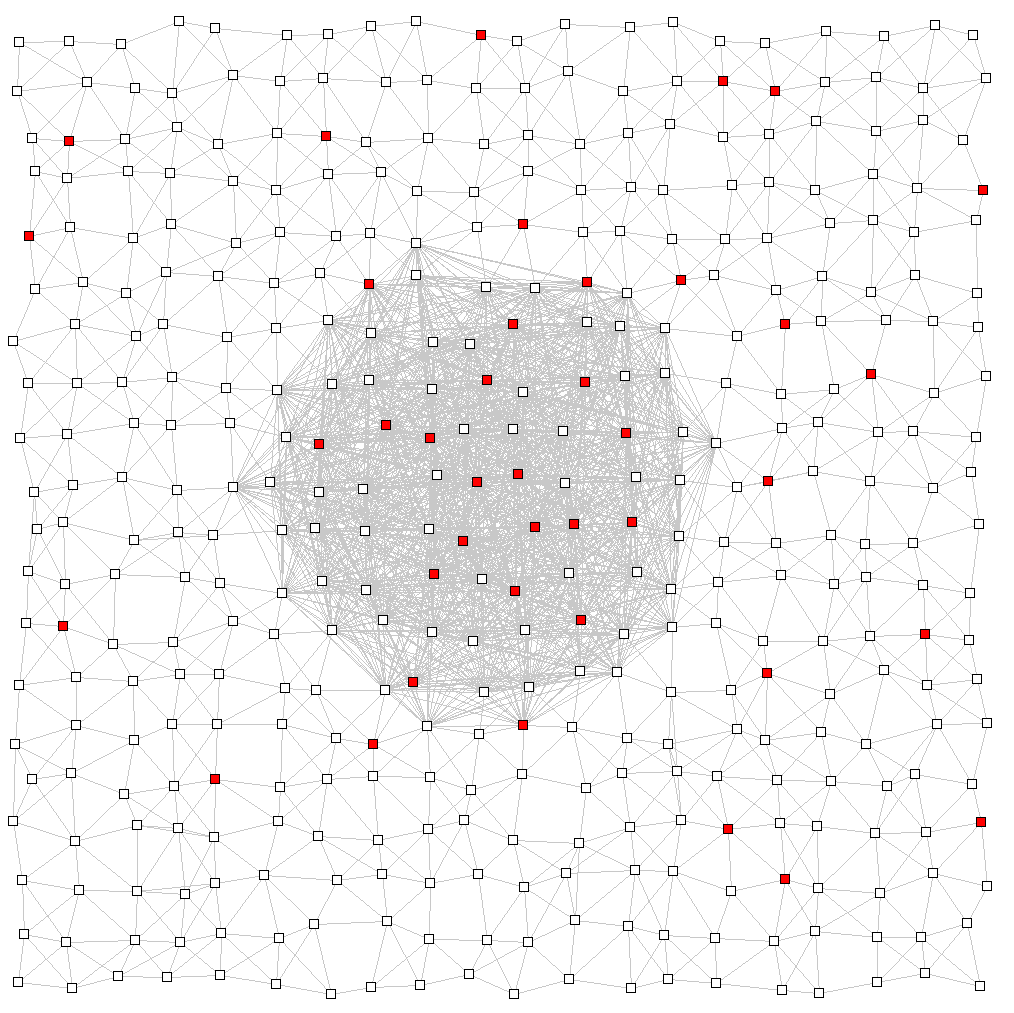In this simple simulation, at every tim
In this simple simulation, at every timestep each particle (red spot) moves along an edge at random to an empty location (if there is one). A central region has more connectivity than the rest. After a while the density inside the central region is higher than outside, because once a particle gets inside then most of the links from there take it to a location that is also inside.
You can see that there are more red spots in the middle than elsewhere.
This demonstrates how gravity could be an entropic force - caused not by gravity waves or anything but by statistics alone.
http://quantumfrontiers.com/2014/06/02/the-theory-of-everything-help-wanted/
This toy model is described in the cited Markopoulou, et al. paper on 'quantum graphity'.
You can see that there are more red spots in the middle than elsewhere.
This demonstrates how gravity could be an entropic force - caused not by gravity waves or anything but by statistics alone.
http://quantumfrontiers.com/2014/06/02/the-theory-of-everything-help-wanted/
This toy model is described in the cited Markopoulou, et al. paper on 'quantum graphity'.

In this simple simulation, at every timestep each particle (red spot) moves along an edge at random to an empty location (if there is one). A central region has more connectivity than the rest. After a while the density inside the central region is higher than outside. This demonstrates how gravity could be an entropic force - caused not by gravity waves or anything but by statistics alone. http://quantumfrontiers.com/2014/06/02/the-theory-of-everything-help-wanted/
Shared with: Public
+1'd by: Ángel Linares García, Philip Horger, Peter Teoh, Taivo Lints, Johnathan Joy, 林則余, Anton Geraschenko, Ivan Zvolsky, Rich Visotcky, Konstantin Burov, Gitesh Khodiyar, Scott Vorthmann, Dave Wonnacott, Kevin C., NativeCharge, Brendan Bassett, Pranay Rajput, Seth Benkunsky, Mehran J, Doug Hackworth, Anthony Giallourakis, stefan jeffers, Marco Pelliccia, Trevor Power, Paul Gray, Hunter Yavitz, Håkan Holgersson
This post was originally on Google+
